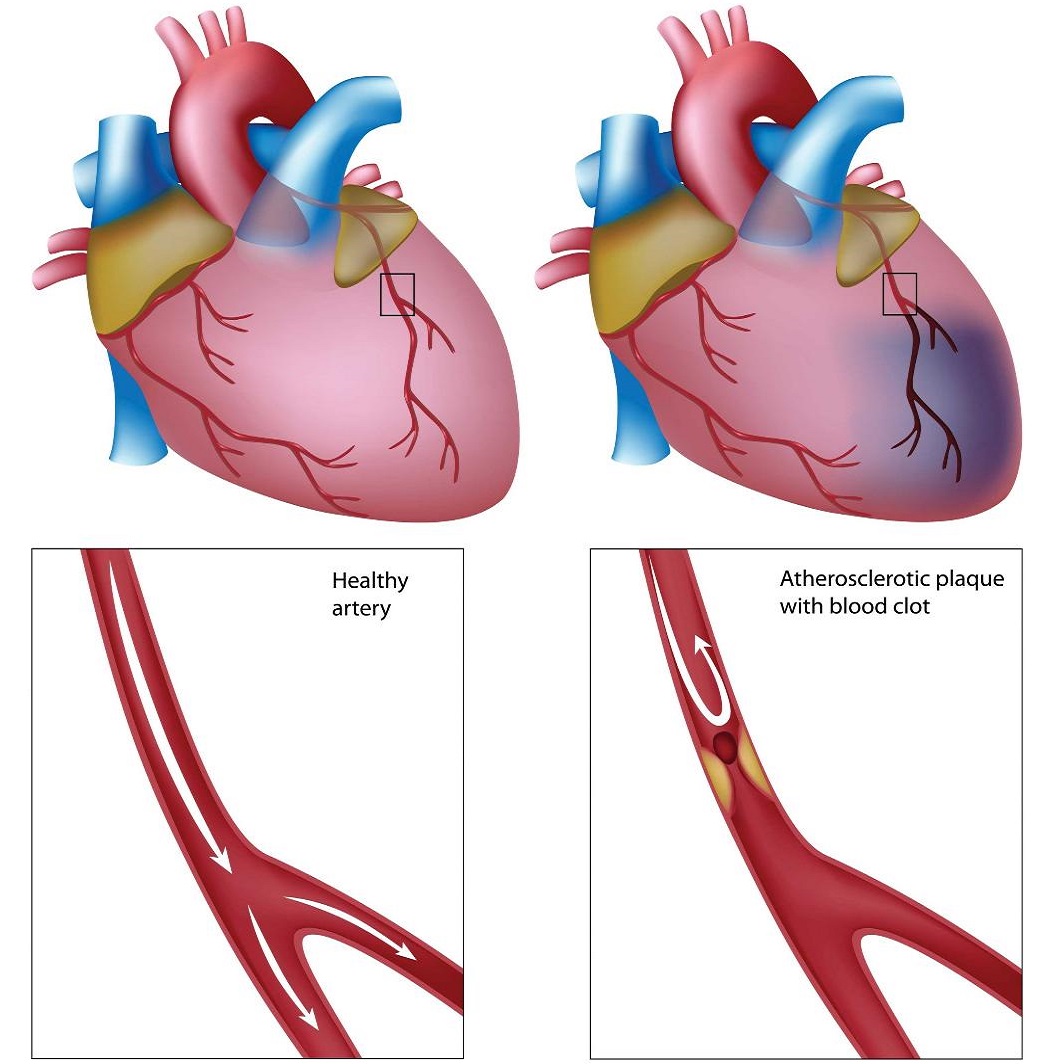
Myocardial Infarction
Heart attack, technically known as myocardial infarction (MI) or acute myocardial infarction (AMI), occurs due to the diminution of blood supply to a part of the heart, causing that particular heart cells to die. Heart attack most commonly occurs due to occlusion (blockage) of a coronary artery following the rupture of a vulnerable atherosclerotic plaque. It results in restriction of blood supply and oxygen shortage ensues. If this situation is left as such without treatment for a sufficient period of time, it can cause damage or death (infarction) of heart muscle tissue (myocardium).
A heart attack is a medical emergency. A heart attack usually occurs when a blood clot blocks blood flow to the heart. Without blood, tissue loses oxygen and dies. Symptoms include tightness or pain in the chest, neck, back or arms, as well as fatigue, lightheadedness, abnormal heartbeat and anxiety. Women are more likely to have atypical symptoms than men. Treatment ranges from lifestyle changes and cardiac rehabilitation to medication, stents, and bypass surgery.


